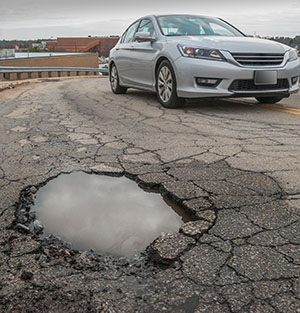Mechanical failures in vehicles, such as brake malfunctions or tire blowouts, can result in severe accidents, leading to serious injuries or fatalities. Determining liability in such cases is complex and depends on various factors, including the nature of the malfunction and the parties involved.
Common Mechanical Failures That Cause Accidents
While some vehicle issues are minor, like flat tires or dead batteries, others can be catastrophic. Significant mechanical failures include:
-
Brake Failures: Defective brakes can prevent a vehicle from stopping in time, leading to collisions.
-
Tire Blowouts: Sudden tire failures can cause drivers to lose control, especially at high speeds.
-
Steering Malfunctions: Issues with steering systems can make it impossible to navigate the vehicle safely.
According to the National Highway Traffic Safety Administration (NHTSA), tire-related crashes alone account for approximately 11,000 accidents annually, resulting in over 600 fatalities.
Determining Liability: Who Can Be Held Responsible?
Liability for accidents caused by mechanical failures can extend to multiple parties:
-
Vehicle Owners/Drivers: Responsible for regular maintenance. Failure to address known issues or recalls can result in liability.
-
Manufacturers: If a defect in design or manufacturing leads to a failure, the manufacturer may be held accountable under product liability laws.
-
Mechanics/Repair Shops: Improper repairs or failure to identify potential issues can place liability on service providers.
-
Government Entities: Poorly maintained roads or inadequate signage can contribute to accidents, leading to potential government liability.
In some cases, multiple parties may share responsibility, and comparative fault laws will determine the extent of each party’s liability.
California Car Accident Statute of Limitations
Under normal circumstances, the California statute of limitations for personal injury and product liability claims is two years. California’s Code of Civil Procedure 335.1 also states that the statute of limitations for car accidents is two years. So, after an accident that causes injury or death as the result of negligence or wrongdoing by another party, a victim or their family will have two years from the date when the accident occurred or two years from when the victim passed away to file a lawsuit. If an accident in California results in only property damage, the victim has three years to file a lawsuit to recover compensation.
Before a personal injury or product liability claim can be filed in California, evidence such as medical records, witness testimony, and police reports must be gathered. Negotiating with the insurance companies can also be lengthy, so it’s a good idea to get started on building evidence for the claim as soon as possible.
Standard Vehicle Defects That Can Lead to Accidents
1. Manufacturing Defects
Manufacturing defects occur when a vehicle or its components deviate from their intended design due to errors during the production process. These defects can compromise the vehicle’s safety and functionality, leading to accidents.
Recent Example: In May 2025, Ford announced a recall of over 270,000 SUVs, including Ford Expeditions and Lincoln Navigators, due to a brake system defect. Misrouted radiator hoses during assembly caused the front brake line to rub against the engine air cleaner outlet pipe, potentially leading to brake failure.
2. Design Defects
Design defects are inherent flaws in a vehicle’s design that make it unsafe, even if manufactured correctly. These defects can affect an entire line of cars.
Notable Case: The Ford Pinto’s fuel system design in the 1970s made it susceptible to fires in rear-end collisions. The design flaw led to numerous accidents and significant legal consequences for Ford.
3. Defective Auto Parts
Faulty auto parts, whether due to design or manufacturing defects, can lead to serious accidents.
Examples:
-
Airbags: Takata airbags were linked to multiple deaths due to explosive deployments. A notable case involved a fatality in Riverside, California, when a defective airbag deployed during a crash.
-
Brakes: In 2012, a family in Hollywood, California, was killed in a crash involving a Nissan vehicle with alleged brake malfunctions .
Legal Recourse: Product Liability Lawsuits
Victims of accidents caused by vehicle defects may pursue product liability lawsuits. These cases typically fall into three categories:
-
Manufacturing Defects: Errors during production that make a vehicle unsafe.
-
Design Defects: Flaws in the vehicle’s design that pose safety risks.
-
Failure to Warn: Inadequate instructions or warnings about a vehicle’s potential risks.
Legal Insight: In product liability cases, plaintiffs must prove that the defect existed and directly caused their injury. For manufacturing defects, it’s essential to show that the product deviated from its intended design .
Statistics on Vehicle Defects and Accidents
-
Accidents Due to Defective Parts: Approximately 44,000 car crashes annually are attributed to mechanical failures, including defective parts .
-
Common Defective Components:
-
Tires: Account for 43% of crashes caused by mechanical failure.
-
Brakes: Responsible for 25% of such crashes.
-
Steering, Transmission, Engine, Suspension: Combined, these account for 10.5% of mechanical failure-related crashes .
-
Vehicle Maintenance
Although most situations where a vehicle’s mechanical failure causes an accident relieve the driver of all liability, there are situations where the driver can still be held liable for the crash. If a commercial vehicle is not adequately maintained and is involved in an accident that causes death or injury, then. In that case, the owner is most often held responsible for damages caused. If an owner knew that their vehicle had issues they were not having fixed, they could still be held directly liable if they took a car to get fixed. It was not done properly by a mechanic. The repair shop or the mechanic who incorrectly fixed the vehicle, intentionally or not, could be liable for the damages. If a vehicle owner does their maintenance or repairs, they are liable for ensuring the parts put into the vehicle are safe to use and correctly installed.
Brake Failure: Causes, Risks, and Prevention
Brake failure is a critical safety issue that can lead to severe accidents, including rear-end collisions. According to the National Highway Traffic Safety Administration (NHTSA), brake-related problems contribute to approximately 22% of vehicle accidents in the United States. Understanding the causes and preventive measures is essential for all drivers.
Real-World Incidents Highlighting Brake Failure Risks
Brake failures have led to numerous accidents, emphasizing the importance of vehicle maintenance:
-
Ford SUV Recall: In May 2025, Ford recalled over 270,000 SUVs due to a brake system defect that could lead to brake fluid leaks and increased stopping distance.
-
Dump Truck Crash in West Hollywood: A dump truck with failed brakes crashed into the iconic Whisky a Go Go music venue, highlighting the dangers of brake system malfunctions.
These incidents underscore the potential consequences of brake failures and the importance of addressing brake issues promptly.
Legal Implications of Brake Failure
In accidents involving brake failure, determining liability can be complex:
-
Driver Responsibility: If drivers neglect regular maintenance, they may be held liable for accidents caused by brake failure.
-
Manufacturer Liability: If a defect in the brake system is identified, the manufacturer may be held responsible.
-
Mechanic Liability: Improper repairs or maintenance by a mechanic can also lead to liability in the event of an accident.
Maintaining detailed service records and addressing brake issues immediately is crucial to mitigate legal risks.
Preventive Measures for Brake Safety
To ensure brake systems function correctly:
-
Regular Inspections: Have your brakes inspected during routine maintenance checks.
-
Monitor Brake Performance: Pay attention to changes in braking behavior, such as unusual noises or increased stopping distances.
-
Address Warning Signs: If the brake warning light illuminates, seek professional inspection immediately.
-
Stay Informed on Recalls: Check for any recalls related to your vehicle’s brake system and address them promptly.
By taking these steps, drivers can significantly reduce the risk of brake-related accidents.
Tire Blowouts
Over 75,000 tires are given to cars in motion every year. Several factors cause these situations, including low tire pressure, dangerous road conditions, defective tires, and overweight truck loads.
Underinflation is one of the quickest ways to destroy a tire’s integrity. When a tire is underinflated, each of its internal components, including the steel, rubber, composite, and fabric structures, flexes beyond its normal limits, potentially leading to significant reductions in the tire’s lifespan.
Sometimes, tires can sustain critical damage that does not show for miles until they give out. Under certain conditions, such as high speeds, high ambient temperatures, or heavy loads, a previously damaged tire may not sustain the increased stress caused by these conditions.
 For tire pressure, whoever is responsible for maintaining the vehicle’s condition, such as the trucker or their trucking company, is often held accountable for causing the crash.
For tire pressure, whoever is responsible for maintaining the vehicle’s condition, such as the trucker or their trucking company, is often held accountable for causing the crash.
Dangerous road conditions, such as potholes or foliage on the roads, might be a fault of the local government or road maintenance teams responsible for keeping the roadways safe. However, suppose the road conditions are made dangerous by weather catastrophes such as hurricanes or tornadoes. In that case, it may be the driver’s responsibility to choose to drive through these conditions.
Overweight trucking loads are typically the fault of the driver or the company, which may have pressured them into taking on more than their vehicle could handle.
When it comes to tire defects, several different parties could be at fault for causing the crash. If the tire was defective upon leaving the factory, the manufacturer might be held liable. If the tires were improperly stored by the tire shop, the distributor might be held liable. If a tire was fitted incorrectly or improperly inflated before installation, the mechanic who changed the tire could be liable for the accident.
Vehicle hacking has emerged as a significant concern in the automotive industry. As modern vehicles increasingly rely on computerized systems, this reliance introduces potential vulnerabilities that malicious actors can exploit, leading to unauthorized control over critical vehicle functions.
Understanding Vehicle Hacking
Modern vehicles have numerous Electronic Control Units (ECUs) that manage various functions, from engine performance to braking systems. These ECUs communicate through networks like the Controller Area Network (CAN) bus, which, while efficient, lacks robust security features such as encryption and authentication. This deficiency makes vehicles susceptible to cyberattacks, allowing hackers to intercept and manipulate data transmitted between ECUs.
Real-World Incidents Highlighting the Risks
Several high-profile incidents have underscored the dangers of vehicle hacking:
-
Fiat Chrysler’s UConnect Vulnerability (2015): Hackers remotely accessed a Jeep Cherokee’s systems via its UConnect infotainment system, enabling them to control the vehicle’s steering and brakes.
-
Tesla Model S Breach (2015): Security researchers exploited vulnerabilities in the Model to gain control over various functions, including the infotainment system and vehicle controls.
-
Kia’s License Plate Exploit (2024): Researchers discovered a flaw in Kia’s web portal that allowed them to control vehicle functions, such as unlocking doors and starting the engine, using only the car’s license plate number.
Legal Implications and Manufacturer Liability
As determining liability in a hacking-related incident becomes complex, as vehicles become more connected, manufacturers may be held accountable if they fail to implement adequate cybersecurity measures. For instance, Volvo has publicly stated it would accept full liability for accidents occurring in autonomous mode, emphasizing the importance of manufacturer responsibility in ensuring vehicle safety.
Get Help With Your Auto Accident Case Today
At Heidari Law Group, our team of litigation lawyers has years of experience handling personal injury and auto accident cases in California and Nevada. Contact an experienced auto accident lawyer for a free case evaluation today.
Q&A: Common Concerns After an Auto Accident
Q: What should I do immediately after an auto accident?
A: Ensure your safety and that of others, call emergency services, document the scene with photos, exchange information with the other driver, and seek medical attention even if injuries aren’t immediately apparent.
Q: How can an attorney help me after an accident?
A: An attorney can navigate the complex legal process, negotiate with insurance companies, gather evidence to support your claim, and advocate for your best interests to secure fair compensation.
***Disclaimer: The content of this webpage, created by Heidari Law Group, is intended solely for educational purposes. While it endeavors to provide a general understanding of the law, it should not be construed as specific legal advice. Accessing and reading this site does not establish an attorney-client relationship with any member of Heidari Law. Furthermore, please be aware that the legal landscape constantly evolves, potentially rendering some information outdated or inapplicable.



